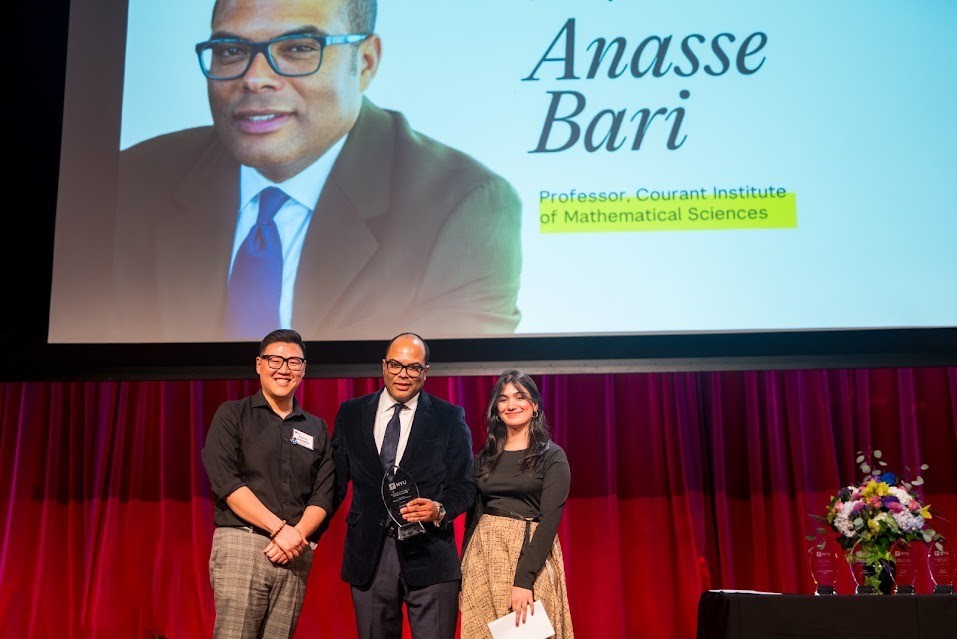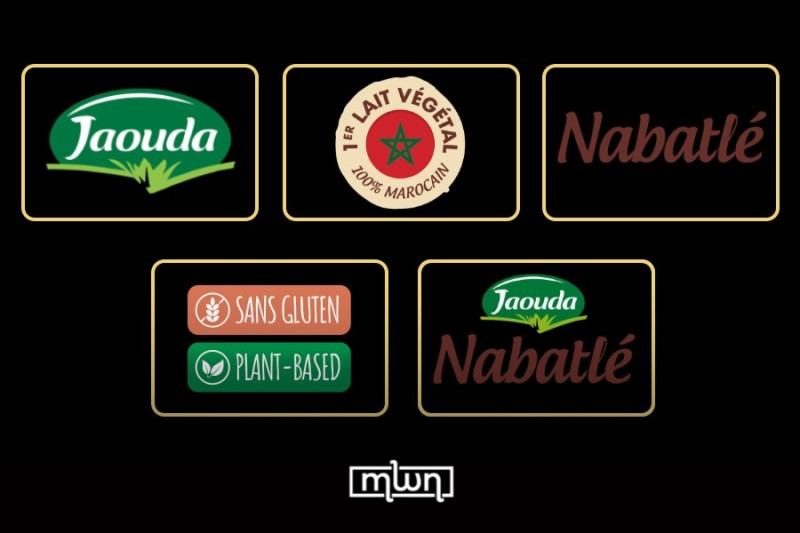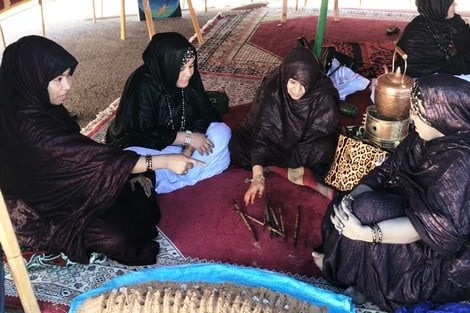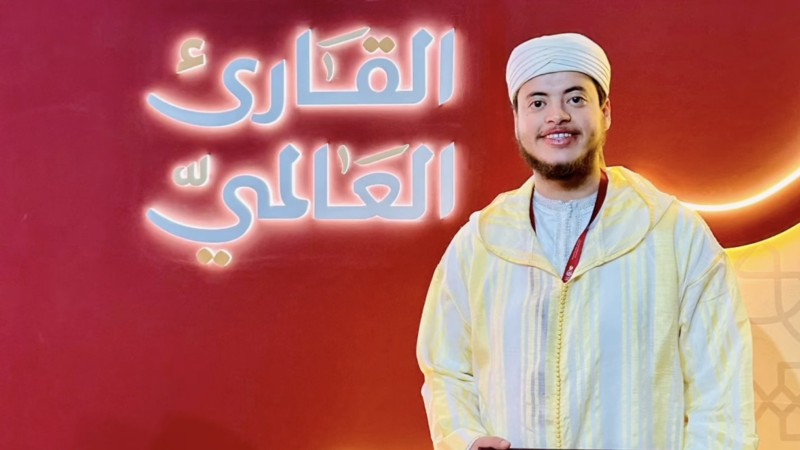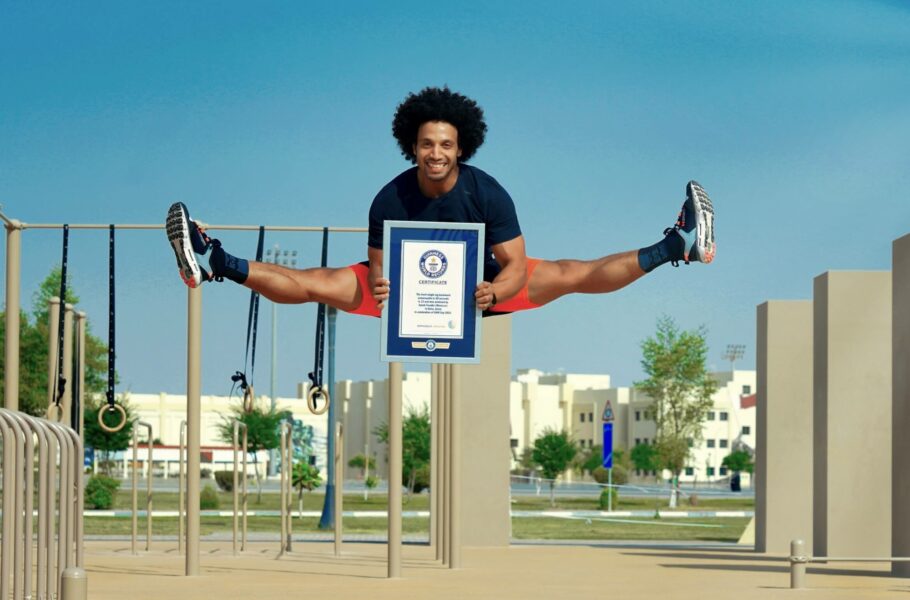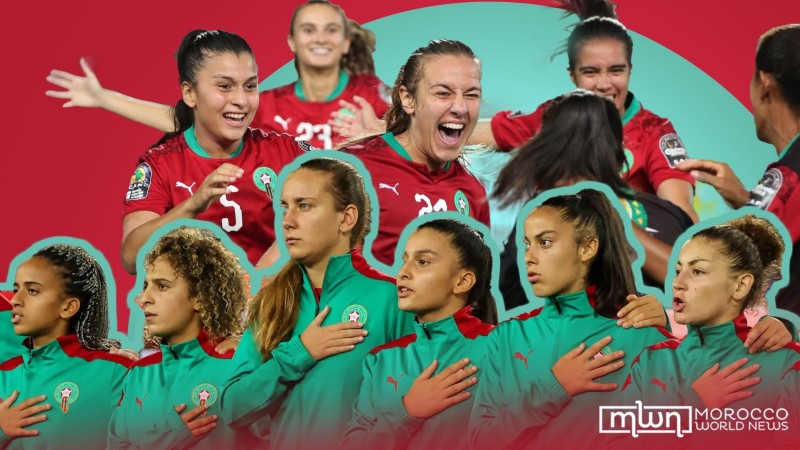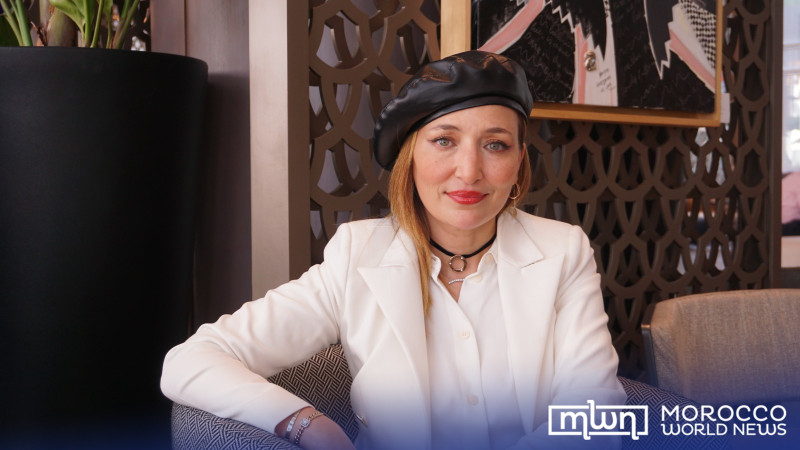His Highness Sheikh Mohammed bin Rashid Al Maktoum, Vice President, Prime Minister and Ruler of Dubai, in the presence of H.H. Sheikh Maktoum bin Mohammed bin Rashid Al Maktoum, First Deputy Ruler of Dubai, Deputy Prime Minister and Minister of Finance, crowned Ahmed Zainoun from Morocco as the top Arab Hope Maker.
Zainoun received a prize of AED1 million.
H.H. Sheikh Mohammed also directed that the two other finalists, Samar Nadeem from Egypt and Khadija Al-Qorti from Morocco, also be honoured with equivalent cash prizes of AED1 million, thus raising the total value of prizes presented with the Hope Makers awards to AED3 million.
Zainoun earned the top honours after receiving the highest number of votes during the closing ceremony of the 5th edition of the Hope Makers initiative, the largest of its kind in the Arab region dedicated to honouring people who make a difference to the lives of others.
Zainoun was recognised for his initiative to treat children with the disorder called Xeroderma Pigmentosum. Young patients suffering from the condition are also referred to as ‘Children of the Moon.’ The closing ceremony of the initiative was held at the Coca Cola Arena today and its broadcasts watched by tens of millions across the Arab world.
H.H. Sheikh Mohammed bin Rashid Al Maktoum said, “Hope Makers embody the true meaning of selfless giving, working tirelessly behind the scenes. They are inspiring role models, transforming lives without seeking recognition, leaving an enduring legacy of humanitarianism. The Arab world is rich in such examples of kindness and service. Recognising these initiatives is an acknowledgment of the values of generosity and compassion.”
Congratulating the winners and all participants, H.H. Sheikh Mohammed added, “Thousands of inspiring individuals across the Arab world joined this fifth edition of Arab Hope Makers. These philanthropists embody generosity and a commitment to positive change, serving as beacons of hope for a brighter future. The UAE remains dedicated to supporting hope and inspiring initiatives, serving as a champion of optimism in the Arab world.”
The closing ceremony was attended by H.H. Sheikh Ahmed bin Saeed Al Maktoum, President of the Dubai Civil Aviation Authority, Chairman of Dubai Airports, and Chairman and Chief Executive of Emirates Airline and Group; H.H. Sheikh Mansoor bin Mohammed bin Rashid Al Maktoum, Chairman of the Dubai Sports Council; and H.H. Sheikha Latifa bint Mohammed bin Rashid Al Maktoum, Chairperson of the Dubai Culture and Arts Authority (Dubai Culture).
The fifth edition of the Hope Makers initiative received over 26,000 nominations within a span of just one month. Each nomination was carefully reviewed according to the initiative’s criteria. Over the past five editions, the initiative has engaged more than 320,000 participants.
Mohammad bin Abdullah Al Gergawi, Minister of Cabinet Affairs, and Secretary-General of the Mohammed bin Rashid Al Maktoum Global Initiatives (MBRGI), stated that the Hope Makers initiative reflects the vision of H.H. Sheikh Mohammed bin Rashid Al Maktoum of fostering a culture of giving and encouraging humanitarians and volunteers to develop impactful projects that drive positive change and counter negativity across Arab communities.
Al Gergawi added, “Since its inception in 2017, Hope Makers has become a landmark initiative in the Arab world’s humanitarian landscape. It inspires positive competition, motivating individuals to serve their communities and develop innovative projects that address the needs of thousands, empowering them to rebuild their lives with hope and confidence in the future.”
Al Gergawi noted that receiving over 26,000 nominations in a single month for the fifth edition, with the vast majority of participants presenting innovative charitable projects, demonstrates the Arab world’s rich humanitarian spirit and its people’s capacity to create a brighter future.
Hosted by Neshan Der Haroutiounian and Asmahan Al Naqbi, the fifth edition’s closing ceremony featured several performances, including a musical operetta by Hammoud Al-Khader, Walid Al-Shami, Balqees, and Omar Al-Abdallat, which preceded the announcement of the Arab world’s top Hope Maker. Internationally renowned singer and music producer RedOne also performed at the ceremony.
At Dubai’s Coca-Cola Arena, attendees watched videos showcasing the journeys of the three finalists, highlighting their humanitarian work and the impact they made in the lives of those in need, including orphans, the sick, the elderly, and the homeless. The audience also heard inspiring stories from two Hope Makers from Tunisia and Mauritania.
Samar Nadeem, founder of the ‘Zahrat Masr’ shelter, dedicated her life to helping others. Raised with a strong sense of compassion, she began her journey in 2016 by assisting an elderly woman living in her building, helping facilitate for her basic necessities that she lacked.
After sharing the woman’s plight on Facebook and receiving an outpouring of support, Samar began receiving numerous requests for help from the public. She responded by aiding the homeless and placing them in shelters. In 2017, Samar founded ‘Zahrat Masr’ to provide safe housing for elderly homeless individuals, and today, the shelter houses dozens of people from across Egypt.
Ahmed Zainoun leads the ‘Moon Voice’ association, which supports children with Xeroderma Pigmentosum (XP). Also known as ‘Children of the Moon,’ young people with this rare genetic disorder are extremely sensitive to ultraviolet light, raising their risk of skin cancer.
Since there is no cure, protection through special creams and UV-protective clothing is crucial. Zainoun cares for 144 children with XP, raising funds to provide them with necessary medications and protective gear. Despite his efforts, some children have succumbed to the disease, motivating him to seek further support for Moon Voice to enable these children to live fulfilling lives and continue their education. Zainoun remains dedicated to his mission, hoping for greater community support to instill hope in young patients and to help them adapt to their condition and lead enriching lives.
Khadija al-Qorti has become a symbol of hope for cancer patients in Morocco, particularly women. Known affectionately as the ‘Mother of Morocco’s Patients,’ her journey began after losing both her husband and sister to cancer.
Turning personal tragedy into a mission for compassionate action, she opened the doors to her home in Rabat, providing free shelter, food, medicine, and emotional support to women battling the disease. With the help of donors, she later expanded her efforts by establishing the Jannat Association, a larger facility to continue her charitable work. Despite limited resources, Khadija has welcomed over 10,000 women from across Morocco since 2009, offering them a place to stay and daily meals for up to three weeks while they seek treatment.
Tunisian Hope Maker Karim Arfa builds and repairs bridges in his area using recycled materials. Inspired by the tragic drowning of a schoolgirl in 2019, he has proudly constructed over ten bridges around the town of El Mourouj to ensure safe passage over rivers and streams for locals. He also runs a small public works company and recycles old furniture to donate to those in need.
Mauritanian rapper Racine Dia, abandoned as a baby and raised by a loving family, now dedicates his life to rescuing orphaned and abandoned children. Inspired by his personal experience, he provides care, shelter, and a sense of belonging to dozens of children. To further his work, he founded the ‘Association for the Fight Against Child Abandonment,’ which, with the help of volunteers, provides a supportive environment for these children to thrive and integrate into society.
The Hope Makers initiative, operating under the Mohammed Bin Rashid Al Maktoum Global Initiatives, aims to highlight these unsung heroes – the men and women dedicating their time, effort, and resources to serving others, aiding those in need, and improving lives. It seeks to amplify their stories and projects through traditional and digital media, increasing their recognition within their communities and across the Arab world.
By showcasing these positive role models, particularly among youth, the initiative aims to inspire others towards constructive change and community development, celebrating them as true stars deserving of praise and recognition.
source/content: wam.ae (headline edited)
___________

_____________
MOROCCO
